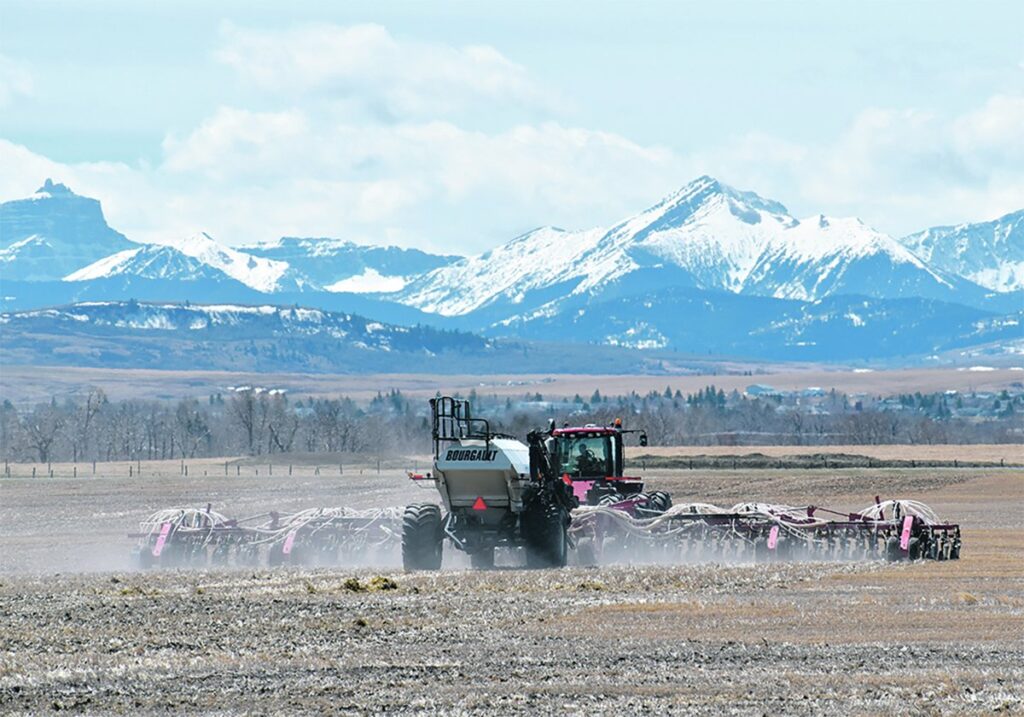Originally published April 29, 2025 on Western Producer, By Kevin Hursh
The enormity of seeding weighs heavily on producers and the entire agricultural supply chain at this time of year. It can take a toll on physical and mental well-being.
The land in Western Canada has been seeded annually for generations, and you’d think the job would be getting a lot easier with the ever-increasing size and complexity of equipment. In some ways that’s true, but in many other ways it’s more difficult than ever.
Farms are bigger, labour is often in short supply, crop rotations are more diverse, a wider range of inputs are used and there’s a rush to get everything done as quickly as possible. Research consistently shows that early-seeded crops typically yield the best.
Seed treatments, pulse crop inoculants, an array of weed control products, various fertilizer and cleaned seed must all be in place and ready to go. The logistics involved are mind boggling.
In parts of Western Canada, seeding is well underway. Other areas are waiting for more drying time. Weather is the one big variable no one can control.
Outside observers probably think rain and/or snow are the only weather delays, but wind and frost can also be problematic and limit progress.
When it’s freezing at night or going to freeze at night, the efficacy of weed spraying becomes an issue, and of course, when the wind is too severe, the sprayer also has to sit. In most cases, weed control ahead of seeding is preferred, so getting behind with spraying can mean the seeder has to sit.
Not all fields dry up evenly.
Most of a field may be ready to seed, but low spots and ravines may still be too wet. It can be a nasty surprise with the sprayer or seeder when you venture into wet spots prematurely. Pulling out equipment wastes time and energy.
Perhaps the most frustrating aspect is equipment breakdown and failure. So many pieces of equipment have to be working for seeding to progress. Augers, conveyors, seed treaters, trucks and of course the sprayer, seeding tractor and actual seeder all need to be functioning.
Most farms have a back-up plan if an auger, conveyor or truck goes down, but spare capacity doesn’t usually exist for the sprayer and seeding outfits.
Yes, many farms run more than one seeder and sprayer, but that’s because they’re needed to get the job done. It’s difficult to accomplish with one seeder or sprayer what you planned to do with two.
With the complexity of equipment, many repairs are now beyond the fixing capability of the owners. A mechanic doing a service call to a farm is more likely to pull out a laptop than a wrench in an attempt to fix a problem.
I phoned a dealership with a seed cart problem this spring asking if I could talk to the service department to get some advice. Instead, the receptionist said she’d use artificial intelligence to describe my problem and email me the potential solutions.
Various pages of service manual technical info promptly arrived, but it was of little use. However, the receptionist did spare a mechanic the time of talking with me. Unlike lawyers, mechanics still provide free advice if you can get through to them.
To survive the seeding season, it’s best to take a deep breath and not be overwhelmed by problems that emerge and the need to cover acres. Easier said than done.
Kevin Hursh is an agricultural journalist, consultant and farmer. He can be reached by e-mail at kevin@hursh.ca.

